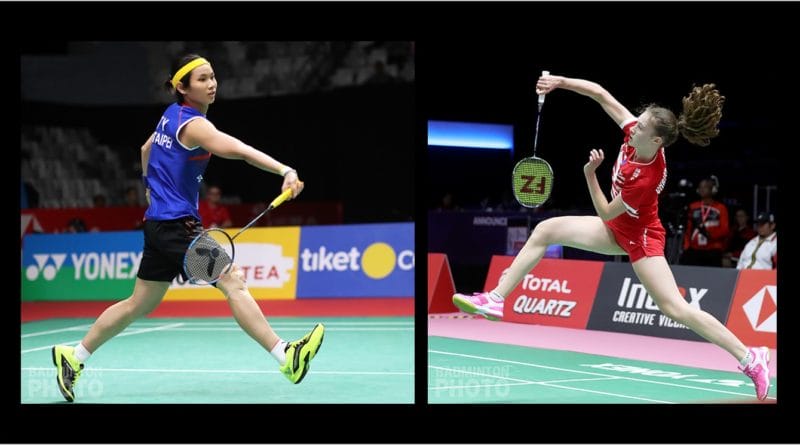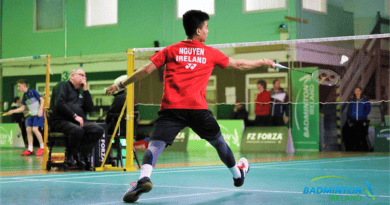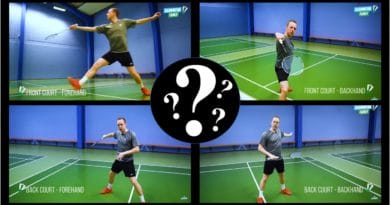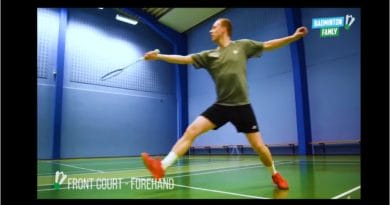6 Ways to improve your Badminton movement
Having great Badminton movement skills will save you time, energy and protect you from injury
What do you believe are the key movements skills?
Here are 6 aspects that will help on the court and in practice to develop real game-like skills
Some coaches say that movement is key to Badminton success
I’m not sure if that’s completely true.
But, if you are not developing your movement or have some technical limitations then it will certainly be tough to improve.
Questions
Efficient movement will be faster, will be less stressful on your body in the long-term and will save energy in matches
– – – – – – – – – – – – – – – – – –
1 Use all types, don’t limit yourself
2 Recovery is important
3 Be “Early to the shuttle”
4 Use your Stances all 3 of them
5 Do you include Split Step / Pretention anticipatory movements
6 Anticipatory Skills are the most important
– – – – – – – – – – – – – – – –
Before reading any more, please take a look at this video
Its only 24 seconds long, so why not watch it 2 or 3 times
Your challenge is to think about these questions while you watch: what movements does she use, how many different stances are adopted, how many stances then suddenly change after the shuttle is struck, can you practice any of these.
Finally, watch for one last time and just enjoy the spectacular movement skills of Tai Tzu Ying
– – – – – – – – – – – – – – – –
1 Use all types: select appropriately
Ensure that you practice all different types of movements and are able to combine them together. Chasse, running, lunging, jump lunging, stopping, starting, vertical & sideways jumping, and recovering.
Don’t forget to include stances. This could be the most overlooked element in your practice and coaching. Go straight to Tip No. 4 below if you have not thought about the Stances you take up in a game and how they can enhance your movement.
It’s certainly not all about standing “Square”, in fact, this can limit and slow you down at times.
Do not just practice one style and presume that it will be applicable for all movements
Running is faster than a chasse over a longer distance, but a chasse maintains a sideways approach and is good for shorter distances.
Even within what seems to the same court situation your movement may vary as you play against better opponents or as you improve your physical and anticipatory skills. Are you changing your practice situations to stress and test your movements?
Examples:
When practising movement into the forecourt for net shots, vary the feeding, in fact, don’t always ‘feed’. Deliver tougher feeds by varying the flight, speed or direction, especially your starting position.
Do you see changes in the movement to these different, varied feeds?
The difference in a feed can cause you to change from a step lunge to a long lunge and then to a jump lunge, deliberately feed in different ways
When practising recovery from the Round The Head court ask your partner (feeder) to return (defensive block) in different ways. It makes a huge difference to your recovery footwork if the hit straight or cross, long or up and over, quick or loopy.
Hopefully, they will even ‘accidentally’ block high at the net for you to think about killing.
Think about all the different recovery movements you would do in these scenarios?

– – – – – – – – – – – – – – – –
2 Recovery is important
The recovery part of a movement practice is often forgotten. I mean the appropriate recovery for your anticipated shot in reply to the stroke you have just played. I don’t mean recovering to the next shuttle in the ‘multi-feed’.
I recommend that you think about recovery as a movement that helps you take up an Early Preparation for the opponents most likely next shot
In practice, include for recovery in relation to the shot you have just struck. If it’s tight or loose will your recovery change? If it doesn’t go over then would you try to recover?
This may mean in order to improve your recovery movement you may have to stop doing single shot practices or using multi-feeding sessions. Practice recovering in relation to the shuttle being returned. And, of course, ask the feeder to return that shuttle!
Example
When you practice your recovery from the Round The Head drop shot ask someone to return it in a variety of game-like replies. Each reply can help develop a different or improved recovery movement.
How do you recommend players recover after playing a Round the Head?
Question
.. will you recover by running, stepping or with a chasse movement?
.. what direction will you take?
.. at what point will you start to prepare and for which anticipated stroke?
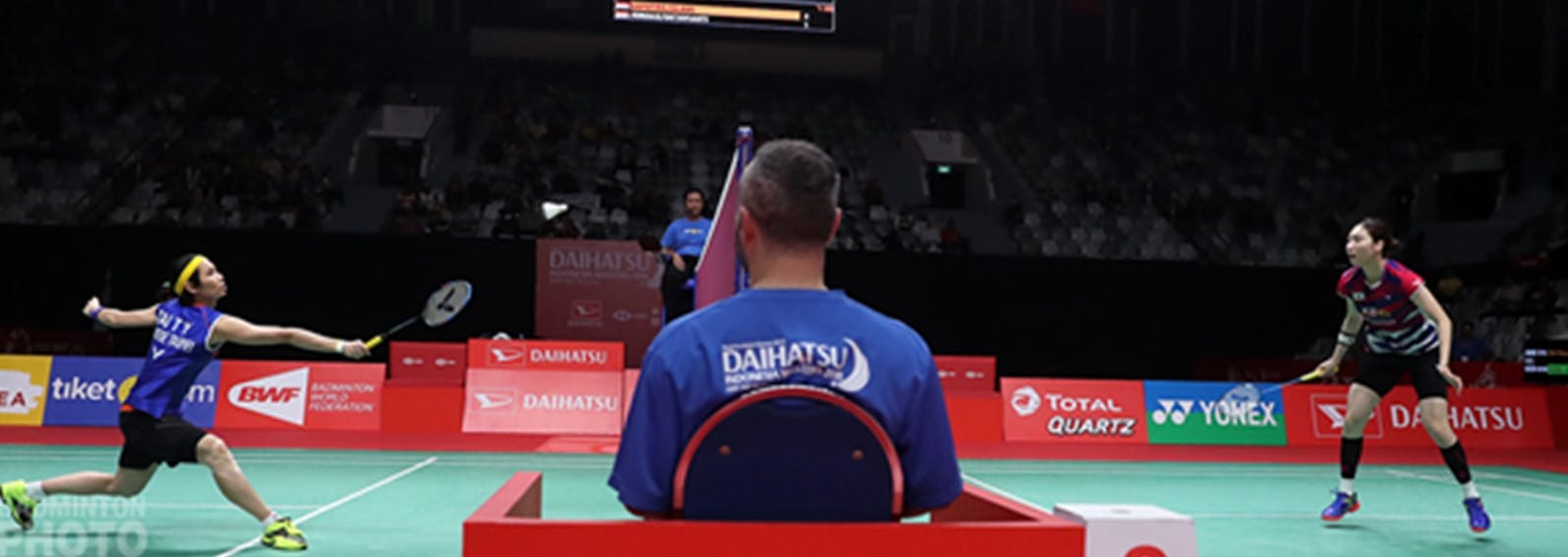
– – – – – – – – – – – – – – – –
3 Early to the shuttle
As a basic, players should, if tactically applicable try to take the shuttle as early as possible.
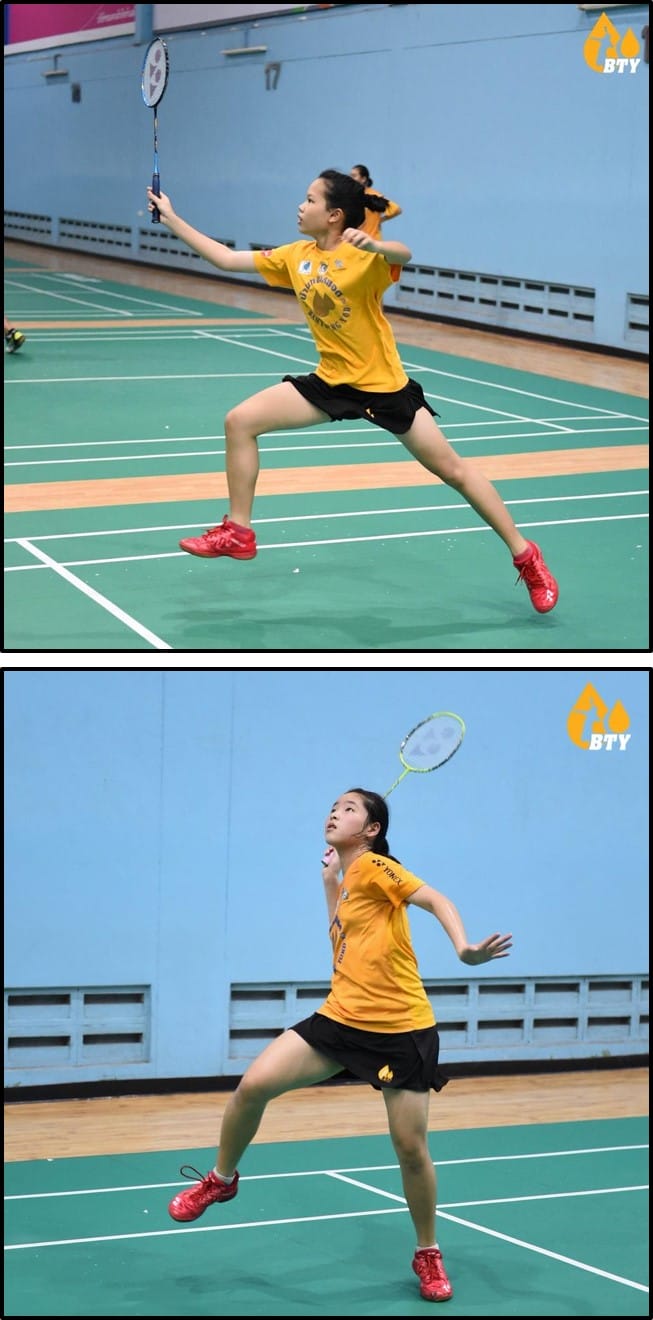 Do you encourage yourself to try this? Think about your current movements on court, how many times do you consider trying to take the shuttle early?
Do you encourage yourself to try this? Think about your current movements on court, how many times do you consider trying to take the shuttle early?
It’s a tough thing to achieve! The physical and mental aspects should not be underestimated.
This often results in one or both feet off the court, not necessarily in a vertical jump but this is the most common observation. Jump-lunging and long stepping should also be employed to shuttles below shoulder height.
Warning
The desire to “take the shuttle early” should not be at the expense of a slow or poor recovery. If your desire is stronger than your stopping and recovering technique, then think again. However, if it’s a kill opportunity does this change your view?
It’s essential to practice with different situations where you have time to choose how early to take the shuttle. Time to decide if it’s appropriate to ‘take it early’ or to ‘wait’ a little. I guess waiting may not be the best description to describe this small pause and consideration. Please help me if you have a better description.
Try This
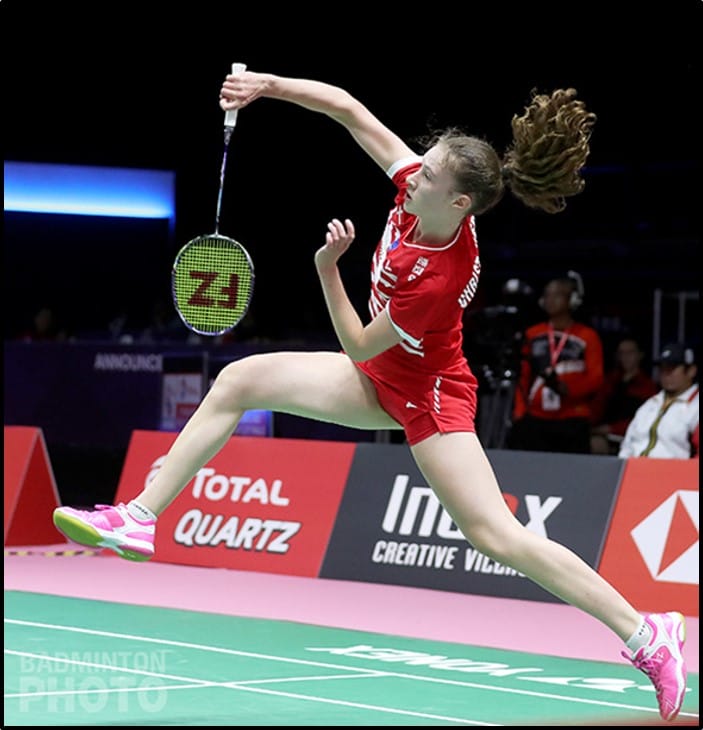 An example of progressive development in understanding “early to the shuttle” would be the deep f/h corner. Elite players often use a quick chasse followed by a sideways jump to intercept, landing and then moving quickly.
An example of progressive development in understanding “early to the shuttle” would be the deep f/h corner. Elite players often use a quick chasse followed by a sideways jump to intercept, landing and then moving quickly.
However, younger players (10 – 14 yrs) whilst can try to jump backwards could be encouraged to chase back and lunge ‘up and out’ whilst playing from above and out to the side, striking before land, but crucially being able to push back into court.
Yes, they may be able to jump out to the side and hit great smashes, but is this from a single shot feed? Don’t forget the recovery. It’s not all about that great ‘straight clip’, especially when playing a better opponent who then returns crosscourt.
I hope that this next statement makes sense to you and that you stop to consider what it means and looks like in your many practice situations. Let me know if it ‘prickles’ you or causes confusion.
The challenge for the coach is to instil the desire to prepare to take the shuttle early. Actually striking the shuttle early is important BUT secondary to the intention to prepare to take it early.
– – – – – – – – – – – – – – – –
4 Stances
Stances will vary depending on the position of the shuttle and the likely replies from the opponent
The correct starting stance is vital for quick efficient movement
Generally, a stance should be taken that allows quick movement to the opponent’s stroke that would strike your side of the court first
To me this statement is vital. Take a moment to go back and read the text again.
If you are familiar with using and coaching Badminton Stances, I would love to know where you have seen similar information. What coaching documents have you read or videos watched that explain the purpose and practices that relate to Badminton Stances. Any information you have would be great.
If you are a player then why not drop me a message and explain how you were first introduced to using these 3 Stances.
If you are a coach then do you introduce stances via other practices or explain in detail when they could be used?

3 Types
I believe that coaches and players should be familiar with 3 stances:
- forward attacking
- square defensive
- backward attacking (including receive of serve)
All these stances are ‘anticipatory’, ie they are adopted before the shuttle is struck by the opponent. Either as a timed transition between movements or as ‘early preparation’ at the end of the last stroke/movement. (lookout for “The complete guide to Badminton Stances”)
Use these mantras
When the shuttle is above the net and can be struck downwards by the opponents adopt a square defensive stance
When the shuttle is below the tape and cannot be struck downwards adopt either the forward attacking or backward attacking stance
How to practice using stances
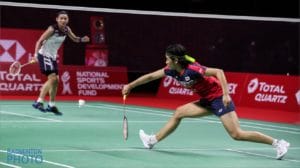
Stances are best practised using some or all of the following ideas
- use Player Start practices ie one shuttle work where the rally starts with the player rather than the feeder
- by combining your stances with split step/pretension movements in transitions within the rally
- start practices “mid-rally”, the game-likeness is huge!
- with young players try using ‘Wallwork” practices that encourage a stance change
- anticipate which shot (shuttle) you think will hit the court first on your side and prepare for that
- experiment with variations of stances, even deliberately getting it wrong to feel the effect on you

– – – – – – – – – – – – – – – –
5 Split Step or Presentation movement
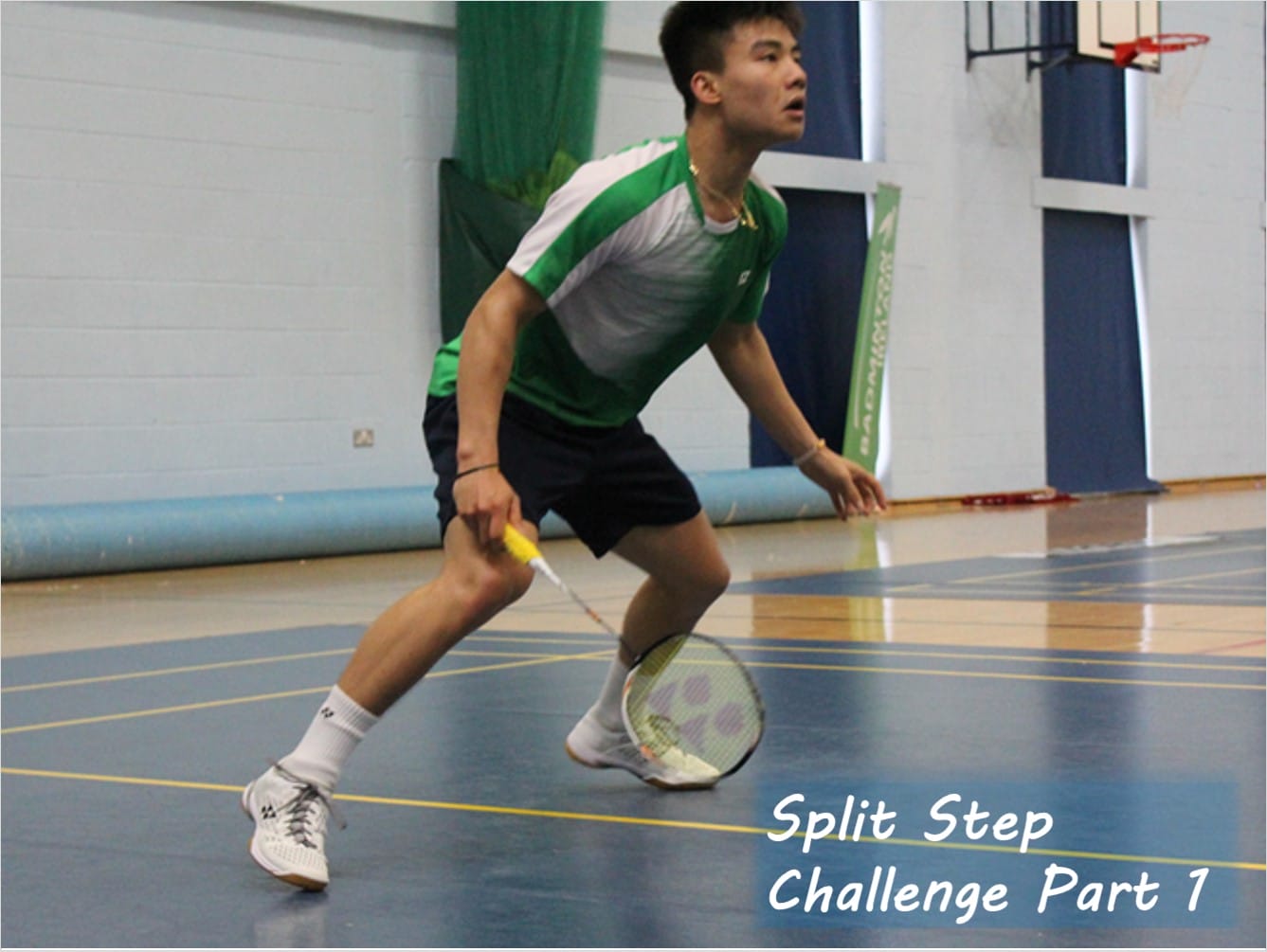 This point could be a post all of its own.
This point could be a post all of its own.
There are so many different views on how to practice the ‘Split Step I get very confused.
My thoughts are that nearly all over movements should start with a pretension action of the legs. That this is often combined within the action of taking up a stance or in the transition between other movements such as recovery and early preparation.
If you want to take the Split Step Challenge then click here or on this image
The action when correctly timed increases the speed of the next initial movement and will also allow the player to change direction quickly if required.
It’s Anticipatory not Reflective
To me, this means that you (the player) will start the movement ‘before’ the opponent strikes the shuttle.
It’s this ‘timed loading’ of the legs to coincide with the opponents striking of the shuttle that creates the fast initial movement.
Incorporate this ‘starting’ movement in your practices and feel the increase in faster initial movements. As I’ve mentioned above I really like using practices that use player starts and resemble mid-rally situations.
I’d love your ideas to help me write “6 Ways to prepare to move”
I was taught to pretension/split into a stance that gave the best opportunity to cover or get to the shuttle that would hit the court first on my side of the net.
Think about these 2 scenarios
- If you play a f/h block from a straight smash and its tight to the net, which of your opponents next choice of shots will you prepare for? After deciding what that shot it could be, what stance would you then take up?
- If you play a low serve in singles, what stance would you adopt immediately before the opponent strikes the shuttle?
I’m guessing that most people reading this would take up a racket leg lead (forward attacking stance) anticipating that they need to cover the forecourt.
Would the choice of stance be wrong if the opponent then flicks the shuttle over your head towards your rear court?
Of course, it’s not wrong!
However, if you are being taught to “split in the direction you wish to move” then which way would you have split?
In order to know in which direction to split, to take up the appropriate stance, you would have needed to have predicted (correctly) the shot to be played. I presume that means you guessed correctly, or you knew exactly what the opponent was going to play! (a mind reader ?)
I’d be very interested in your thoughts about this alternative statement below. Coaches, Players or Parents, please take a moment and let me know what you think.
Maybe the best practice utilises the combination of stances that change from situation to situation to ‘cover’ the shot you either think will hit the court 1st or you think ‘tactically’ you should cover.
The transition in and out of these stances used timed anticipatory movements and could be called a split, a pretension or a preloading. I don’t mind what you call it, I just hope that you try it out.
– – – – – – – – – – – – – – – –
6 Anticipatory Skills
Good anticipatory skills are essential for quick movements and will give that ‘extra’ speed to all movements. Of course, work in the gym and repetitious shadow work will both help. However, if you want to have great movement skills become better at anticipating.
The best way is to play games or take part in practices that are ‘game-like”, but what makes a practice Game-like?
Have you read this post, it may give you some ideas.
The key, I believe is to practice with indecision in training. Check to see how much of your weekly training includes real game-like decisions and use practices or matches that include
- Rackets and shuttles
- Stimuli to observe (the pictures and opponent actions that you would see in a match)
- Player and/or opponent choices
- A single shuttle being struck in a realistic way
- The flight patterns resemble those in a match
- The timing of the feed is similar to a match
- The shuttle being returned from where you last directed it
- The pursuit of a goal or target
Have you read the post that discussed elements that go into having a great effective practice?
Number 5 is all about making practice tougher but it also helps with improving your anticipation. Anticipation in real game situations!
Practice should be made harder not just by increasing the speed or the duration, but by increasing the number of decisions
Hopefully, the court time will create feelings that you get are those similar to those in a match. Better still play matches, lots of matches.
Ok, just playing match after match may not improve your anticipation if you don’t add that little extra.
Try to anticipate what your regular opponent is
The target of the practice should be to anticipate the opponent’s reply and prepare for that by the use of an early preparation from the previous stroke and the correct stance.
Make the practices gamelike: use one shuttle, game speed, include decisions making, have some free will, ensure that there are winners and losers.
Want more?
Click the video link below and watch the breakdown for these 4 movements then consider the questions below
Questions
1. What do you think of the height that the net shots are taken at?
2. What do you think of the recovery footwork from the forecourt?
3. What do you think about the choice of the preparation stance for the backhand net?
4. What are your thoughts on the recovery footwork in the Round the Head-court?

